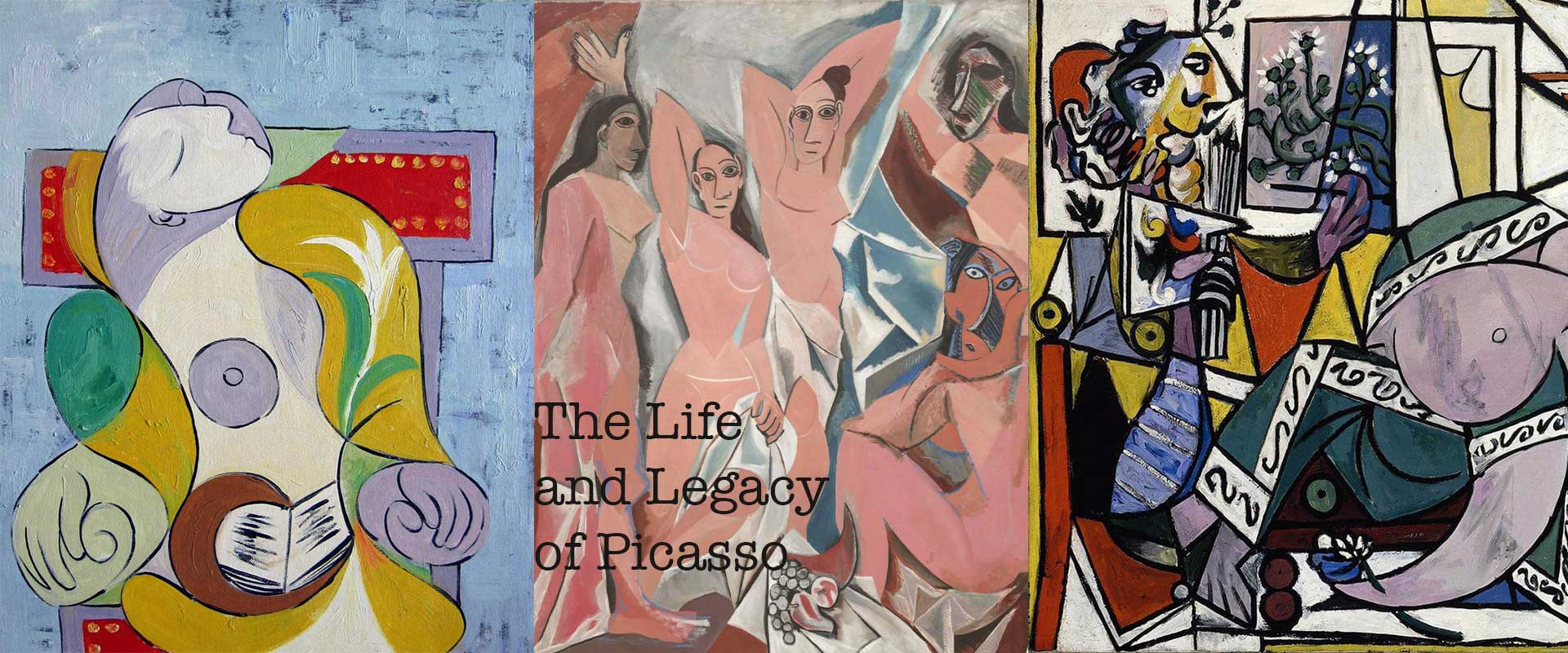Pablo Picasso stands as one of the most iconic and revolutionary artists in history, leaving behind a vast body of work that redefined what art could be. His influence extends far beyond painting — encompassing sculpture, ceramics, prints, and stage design — making him one of the most versatile creative forces of the 20th century. Throughout his prolific career, Picasso produced more than 20,000 artworks, each reflecting his restless experimentation and desire to challenge convention. From the somber tones of his Blue Period to the groundbreaking abstractions of Cubism, his journey offers a fascinating look into the mind of a true master. This complete guide explores Picasso’s early years, artistic evolution, personal life, and the enduring impact of his work on modern art and culture.
Early Life and Influences
Childhood in Málaga
Pablo Diego José Francisco de Paula Juan Nepomuceno Crispín Crispiniano María Remedios de la Santísima Trinidad Ruiz Picasso was born on October 25, 1881, in Málaga, Spain. His father, José Ruiz Blasco, was an art teacher and painter who recognized Pablo’s talent at an early age. Picasso’s first formal lessons in drawing came from his father, but his innate skill quickly surpassed any instruction. By the time he was a teenager, he could draw with remarkable precision and confidence.
Education and Early Training
Picasso’s family moved to Barcelona in 1895, where he attended the School of Fine Arts. The city’s vibrant cultural scene exposed him to modernist influences, and he soon became part of artistic circles that challenged traditional Spanish art. Later, he studied at Madrid’s Royal Academy of San Fernando but found academic training restrictive, preferring to explore the Prado Museum’s collections and sketch from life.
Picasso’s Artistic Periods
Picasso’s career is often divided into distinct periods, each reflecting personal experiences, historical events, and evolving artistic goals.
| Period | Years | Characteristics | Notable Works |
|---|---|---|---|
| Blue Period | 1901–1904 | Melancholic blue tones, themes of poverty, isolation | The Old Guitarist, La Vie |
| Rose Period | 1904–1906 | Warmer pink and orange hues, circus performers, optimism | Family of Saltimbanques, Boy with a Pipe |
| African Period | 1907–1909 | Inspired by African masks and sculpture, proto-Cubism | Les Demoiselles d’Avignon |
| Analytic Cubism | 1909–1912 | Fragmented geometric forms, muted palette | Portrait of Ambroise Vollard |
| Synthetic Cubism | 1912–1919 | Collage elements, brighter colors, mixed media | Still Life with Chair Caning |
| Later Work | 1920–1973 | Diverse styles, ceramics, political works, abstraction | Guernica, The Weeping Woman |
The Birth of Cubism
Collaboration with Georges Braque
Picasso, along with Georges Braque, pioneered Cubism in the early 20th century. This movement shattered traditional perspectives by breaking objects into geometric forms and showing multiple viewpoints at once. It was a radical departure from realism, forcing viewers to engage with art in a new intellectual way.
Impact on Modern Art
Cubism influenced countless artists and movements, from Futurism in Italy to Constructivism in Russia. It also laid the foundation for abstract art, proving that representation could be entirely reimagined.
Iconic Works and Political Statements
Guernica
Painted in 1937 in response to the bombing of Guernica during the Spanish Civil War, this monumental black-and-white mural remains one of the most powerful anti-war statements in art. Its fractured figures and chaotic composition capture the horror and suffering of innocent civilians.
The Weeping Woman
A companion to Guernica, this painting portrays a woman in intense grief, her face fragmented into sharp geometric planes. It’s often interpreted as a symbol of human suffering in times of war.
Personal Life and Relationships
Picasso’s relationships often inspired and influenced his art. He had well-documented partnerships with Fernande Olivier, Olga Khokhlova, Dora Maar, Françoise Gilot, and Jacqueline Roque. Each muse brought a different dynamic to his work, shaping stylistic shifts and emotional tone.
Picasso’s Legacy
Influence on Future Artists
From abstract painters to street artists, Picasso’s influence continues to echo across creative fields. His boldness in experimentation encouraged future generations to embrace innovation without fear of criticism.
Museums and Exhibitions
Picasso’s works are displayed in major institutions worldwide, including the Museu Picasso in Barcelona and the Musée Picasso in Paris. Collectors and art lovers can also explore reproductions through Pablo Picasso wall art prints to bring his timeless creativity into their own spaces.
Picasso’s Place Among Other Masters
While Picasso redefined modern art, his legacy stands alongside other giants like Vincent van Gogh and Edouard Manet. Each artist contributed unique visions, yet all share the courage to challenge artistic norms and redefine visual expression.
Conclusion
Pablo Picasso’s extraordinary career reshaped the boundaries of artistic expression. His ability to reinvent his style while remaining unmistakably himself is a rare gift in art history. Through his Blue and Rose periods, groundbreaking Cubism, and politically charged works like Guernica, he left a legacy that continues to inspire both established and emerging artists. His works remain a testament to the power of creativity to challenge, provoke, and transform. For admirers seeking to connect with his genius, Pablo Picasso wall art prints offer a way to bring his vision into everyday life, ensuring his influence endures for generations to come.
FAQs About Pablo Picasso
How many artworks did Picasso create?
Picasso produced more than 20,000 artworks, spanning paintings, sculptures, ceramics, drawings, and prints.
What was Picasso’s most famous period?
While opinions vary, the Cubist period and the creation of Guernica are often considered his most influential.
Did Picasso only paint?
No, he explored multiple mediums, including sculpture, ceramics, printmaking, and stage design.
What made Picasso’s art revolutionary?
He broke away from realism, developing Cubism and other innovative styles that reshaped modern art.





